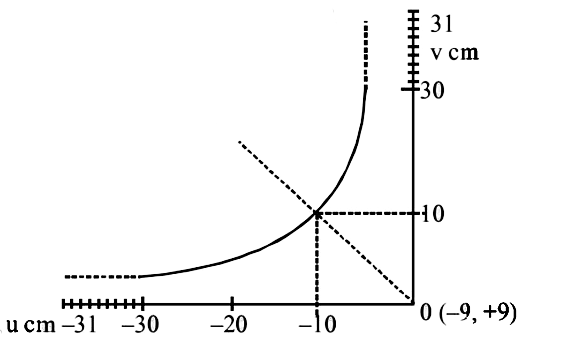The slit of a collimator is illuminated by a source as shown in the adjoining figures. The distance between the slit S and the collimating lengs L is equal to the focal length of the lens. The correct direction of the emergent beam will be as shown in figure.

1
3
2
None of the figures.
The correct Answer is:C
In case of convex lens if rays are coming from the focus, then the emergent rays after refraction are parallel to principal axis.
Topper's Solved these Questions
- GEOMETRICAL OPTICSBOOK - A2ZCHAPTER - GEOMETRICAL OPTICSEXERCISE - Prism Theory And Dispersion Of Light
45 Videos
- GEOMETRICAL OPTICSBOOK - A2ZCHAPTER - GEOMETRICAL OPTICSEXERCISE - Optical Instruments
55 Videos
- GEOMETRICAL OPTICSBOOK - A2ZCHAPTER - GEOMETRICAL OPTICSEXERCISE - Section D - Chapter End Test
30 Videos
- ELECTROMAGNETIC WAVES AND COMMUNICATION SYSTEM BOOK - A2ZCHAPTER - ELECTROMAGNETIC WAVES AND COMMUNICATION SYSTEM EXERCISE - Section D - Chapter End Test
30 Videos
- MAGNETISM AND MATTERBOOK - A2ZCHAPTER - MAGNETISM AND MATTEREXERCISE - Section D - Chapter End Test
30 Videos
Similar Questions
Knowledge Check
A ray of light AO is incident on a diverging lens as shown in figure. The focal plane of the lens is also given. The possible direction of the refracted ray will be
 A
A B
B C
C Dnone of the above
Dnone of the aboveThe graph shown relationship between object distance and image distance for a equiconvex lens. Then focal length of the lens is
 A0.50±00.5cmB0.50±0.10cmC5.00±0.05cmD5.00±0.10cmu
A0.50±00.5cmB0.50±0.10cmC5.00±0.05cmD5.00±0.10cmu
If the bio-convex lens is cut as shown in the figure, the new focal length f' isA2fBfC(f)/(2)DInfinite
Find the focal length fo the lens shown in the figure.

View SolutionFigure shows a narrow slit S illuminated b a monochromatic light of wavelength λ in a double-slit experiment. In the path of the rays reaching the upper slit S1, a tube to length L is interposed in which the index of reflection of the medium varies linearly as shown in figure . The position of the central maximum in the interference pattern on the screen was displaceed by N fringes. Find the value of N in terms of μ0, L and λ.


View SolutionA concave mirror of focal length 20 cm and a convex lens of focal length 10 cm are kept with their optic axes parallel but separated by 0.5 mm as shown in the figure. The distance between the the lens and mirror in 10 cm. An object of height 3 mm is placed on the optic axis of lens at a distance between the lens and mirror is 10 cm. An object of height 3 mm is placed on the optic axis of lens at a distance 15 cm from the lens. Find the length of the image formed the mirror in mm.

View SolutionThe correct curve between fringe width β and distance between the slits (d) is figure is -
View SolutionTwo similar planoconvex lenses are combined together in three different ways as shown in the adjoining figure. The ratio of the focal lengths in three cases will be

View Solution


